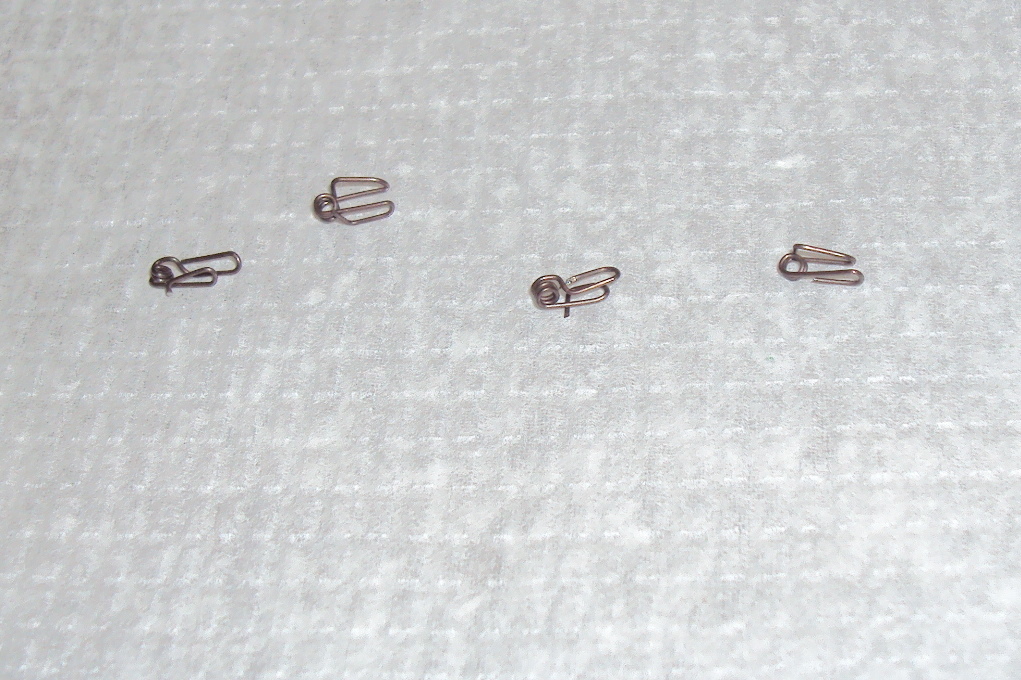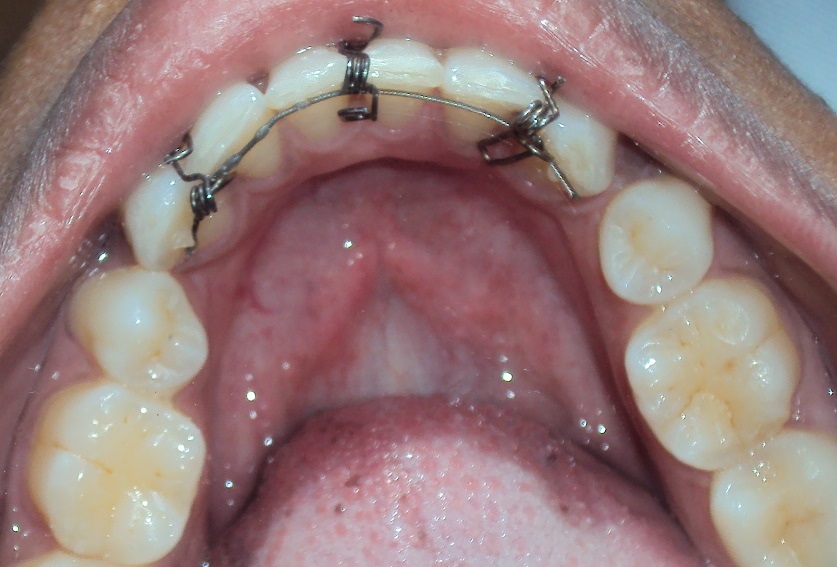Stabilising Springs for Fixed Lingual Retainer
M.K. Karthikeyan1, Ramachandraprabhakar2, R. Saravanan3, N. Rajvikram4, Kuppuchamy5
1 Professor, Department of Orthodontics, Thai Moogambigai Dental College, Chennai- 600107, India.
2 Dean and Professor, Thai Moogambigai Dental College, Chennai-600107, India.
3 Professor, Department of Orthodontics, Thai Moogambigai Dental College, Chennai-600107, India.
4 Reader, Department of Orthodontics, Thai Moogambigai Dental College, Chennai-600107, India.
5 Postgraduate Student, Department of Orthodontics, Thai Moogambigai Dental College, Chennai-600107, India.
NAME, ADDRESS, E-MAIL ID OF THE CORRESPONDING AUTHOR: Dr. M.K. Karthikeyan, Professor, Department of Orthodontics, Thai Moogambigai Dental College, Chennai- 600107, India.
Phone: 9444367778,
E-mail: mkdental98@gmail.com
Most treated malocclusion needs fixed lingual retention. To stabilise fixed lingual retainer in the exact location needs proper stabilisation. Proper stabilization requires a holding spring.
This Stabilising Spring should be easy to fabricate and help the clinician to stabilise the retainer quickly and save the chair side time. More over it should not irritate the mucosa and should be easy to insert and remove.
Stabilising spring, Fixed Lingual Retainer, Relapse
Introduction
In Orthodontics, desired tooth movement achieved with elaborative treatment mechanics needs retention to prevent relapse [1]. Maintaining the teeth in the corrected position is always a challenge for the orthodontists. Since the periodontium needs time to reorganize, it has become mandatory to hold the teeth in the corrected position for long. Retention with removable appliance needs patient’s co-operation. To overcome this drawback, fixed lingual retention technique was evolved. Maintaining the fixed lingual retainer manually on the teeth at the correct position is very difficult. To overcome this difficulty, various methods have evolved to stabilise the fixed retainers and Stabilising Spring is one of the methods to stabilise the retainer and is easy to fabricate without tissue irritation.
Case Report
A female patient of 22 years reported to Orthodontics Department, Thai Moogambigai Dental College, Golden George Nagar, Chennai, India.
Chief Complaint
Severe proclination of upper and lower anteriors.
On clinical examination, the case is a Class 1 bimaxillary protrusion with acute nasolabial angle.
Treatment Plan
All 1st premolars extraction followed by fully banded 0.022 slot MBT prescription (3M).
Material and Methods
Case was started with 0.022 slot MBT prescription. After leveling and alignment, enmasse retraction of upper and lower anteriors was done with 0.018 x 0.022 stainless steel wire.
After retraction, detailing and finishing was done with 0.016 stainless steel wire. To avoid relapse, it was decided to stabilise the upper and lower anteriors with fixed lingual retainer but maintaining the fixed lingual retainer in the middle of the lingual clinical crown without occlusal interference needed a Stabilising spring. After Stabilisation, the enamel was etched wiith 37% phosphoric acid. The enamel and the lingual retainer were conditioned with the primer and light cured for setting. A thin layer of flowable resin (3M) was used to bond the retainer to the enamel and light activated. Stabilising springs were removed after the procedure.
Fabrication of Stabilising Spring
0.016 A.J. Wilcock stainless steel wire is used for the fabrication. Kesling separator [2] is made and instead of straight leg, right angle bend is given to the leg overlapping the helix. Then, the wire is bent to form a U-shaped configuration on both the legs, for holding the retainer on the lingual side and on the labial side of the tooth for stabilisation [Table/Fig-1]. The length is determined, based on the clinical crown length till the gingival margin [Table/Fig-2] and fixed in the interdental region. The spring should be firm, but not too tight that it injures the gingiva.
Stabilising Springs photo

Springs Stabilising the fixed lingual retainer

Advantages
Easy to fabricate
Less chair side time
Cost Effective
No lab work needed
Can be fixed gently
Easy insertion and removal
Disadvantages
If not constructed properly, it will get dislodged easily
Results
It Stabilises the lingual retainer well, allows to reposition the retainer to the desired position on the lingual surface of the teeth without removing the spring. The spring is easy to remove and insert.
Discussion
It can be fixed in the inter dental region of each tooth for better stability of the fixed lingual retainer. Moreover, it provides free play for the operator to adjust the position of the fixed retainer. It is easy to fabricate, unlike W arch stabiliser [3] which needs a laboratory procedure and is time consuming.
It can be fixed gently without discomfort to patient, unlike modified kesling type spring which has got a sharp end that may irritate the mucosa [4]. It does not require any other material to stabilise the retainer which will be difficult to remove [5].
Conclusion
This Stablising Spring helps the clinician to overcome the difficulties in the fixed lingual retainer stabilisation with good patient compatibility and is operator friendly to adjust the position of the lingual retainer, at the same time holding the lingual retainer firmly without slippage. It saves clinicians time and is easy to fabricate. It is cost-effective. Since, it does not irritate the gingiva, it can be used safely and requires elaborative study.
[1]. Miyazaki H, Motegi E, Yatabe K, Isshiki Y, Occlusal stability after extraction orthodontic therapy in adult and adolescent patientsAm J Orthod Dentofacial Orthop 1998 Nov 114(5):530-7. [Google Scholar]
[2]. Begg PR, Kesling PC, Orthodontic theory and technique 1977 ed 3PhiladelphiaWB Saunders [Google Scholar]
[3]. Garabadu A, Chalasani S, Vaz AC, W- shaped lingual retainer wire StabiliserJ Ind Othod Soc 2011 45(2):150-51. [Google Scholar]
[4]. Nagar N, Agarwal D, Modified Kesling’s separators for Stabilising lingual retainer wireAnnals of Dental Research 2011 1(1):96-99. [Google Scholar]
[5]. Vasisht V, Glass Ionomer cement hooks for Stabilising lingual retainer wireJ Clin Orthod 2010 44(6):393-94. [Google Scholar]